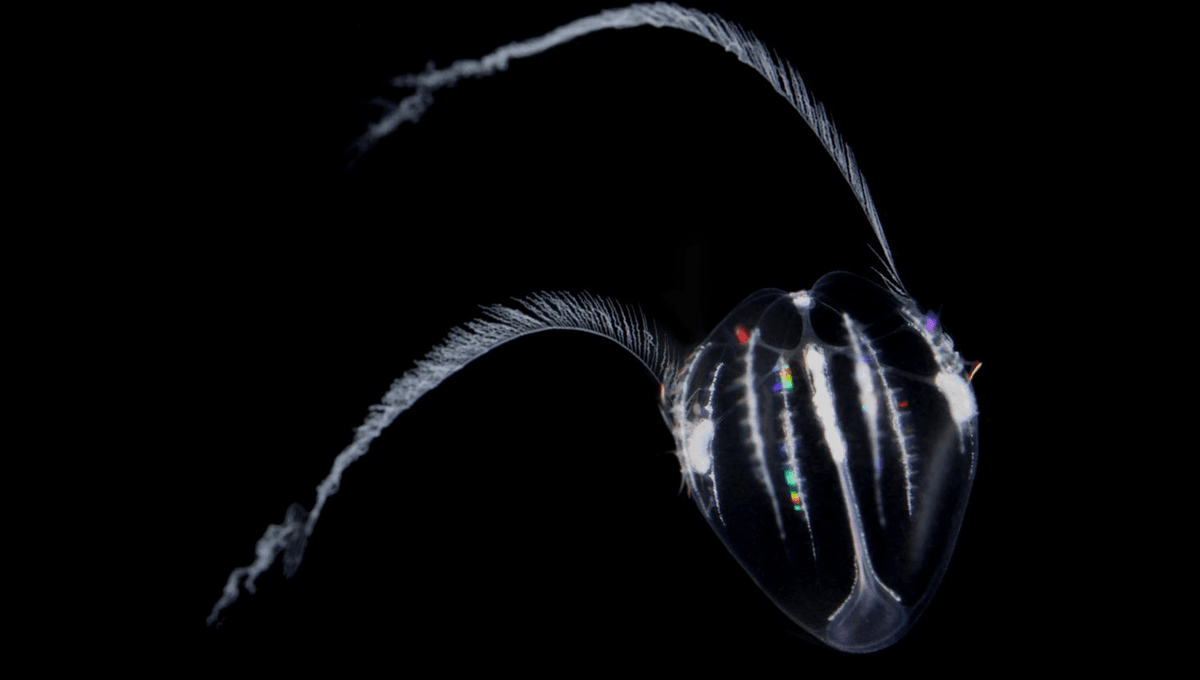
Aging happens in one direction, right? We’re all slowly getting older, accumulating gray hairs and wrinkles, and there’s no going back. While it’s true that as humans we’re not getting any younger, the same can’t be said for comb jellies. When the going gets tough, these strange sea creatures have the incredibly rare ability to turn back the clock and revert to a more youthful form.
Only a select few species are capable of this “backward aging”. Most notably, Turritopsis dohrnii, or the “immortal jellyfish” – the only species known to undergo reverse development after the onset of sexual reproduction. Now, with the addition of ctenophore Mnemiopsis leidyi to this exclusive list, scientists are speculating that life cycle plasticity in the animal world might be more common than previously realized.
“The fact that we have found a new species that uses this peculiar ‘time-travel machine’ raises fascinating questions about how spread this capacity is across the animal tree of life,” study author Joan J. Soto-Angel said in a statement.
Ctenophores, also called comb jellies, are one of the oldest extant animal lineages. Although they are known to have a remarkable capacity for regeneration and are capable of sexual reproduction as larvae, thus blurring the line between maturity and immaturity, they had never been documented undergoing reverse development. That is, until Soto-Angel stumbled upon something curious in his lab.
An adult ctenophore had seemingly vanished from its tank, and in its place was a larva. Could it be the same individual having done a Benjamin Button? Soto-Angel, alongside fellow study author Pawel Burkhardt, sought to find out.
The pair exposed adult M. leidyi to a series of stresses involving starvation and physical injury, and, amazingly, the enigmatic invertebrates demonstrated their ability to revert back to the larval stage.
Of the 65 jellies the researchers experimented on, 13 showed complete reversion from adult (lobate) to larvae (cydippid). These newly re-minted larvae had a characteristic rounded body, two fully formed tentacles, and lacked lobes and auricles – aka typical cydippid morphology. A further seven ctenophores developed tentacles but only partially reabsorbed the lobes and/or auricles.
“Witnessing how they slowly transition to a typical cydippid larva as if they were going back in time, was simply fascinating,” said Soto-Angel. “Over several weeks, they not only reshaped their morphological features, but also had a completely different feeding behavior, typical of a cydippid larva.”
Given how old comb jellies are – it’s thought they emerged around 700 million years ago – the researchers suggest that reverse development could be just as ancient. Primordial critters could have been turning back time for eons.
“This is a very exciting time for us,” Burkhardt said. “This fascinating finding will open the door for many important discoveries. It will be interesting to reveal the molecular mechanism driving reverse development, and what happens to the animal’s nerve net during this process”.
The study is published in PNAS.
Source Link: These Strange Sea Creatures Can Turn Back Time And Age In Reverse